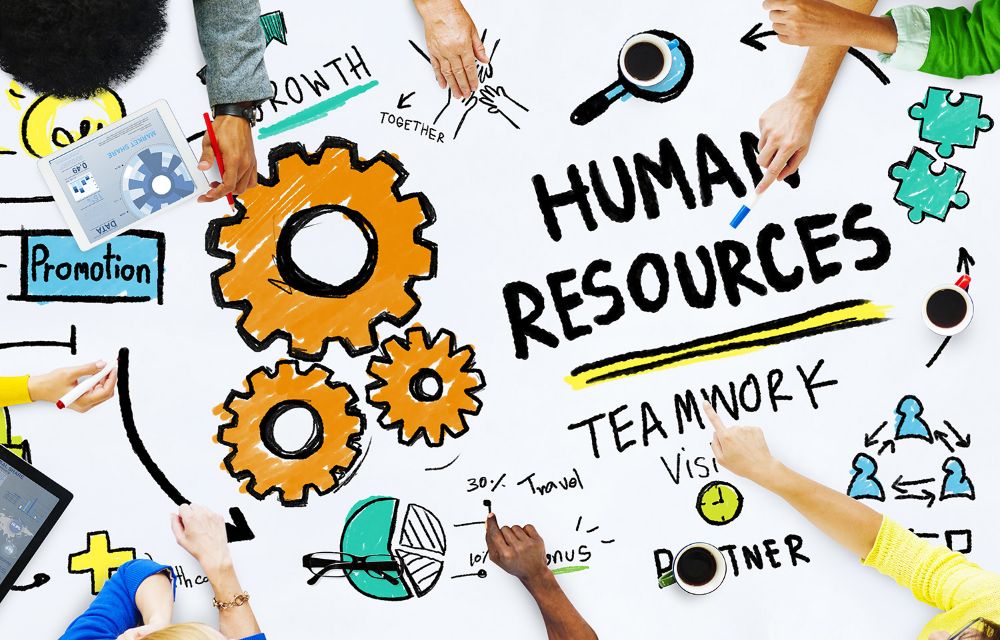Posted by : Abhinav Kumar, Director

The COVID-19 pandemic has imposed a tremendous cost on people’s lives and livelihoods, forcing the businesses to adjust rapidly to survive. In the wake of the current scenario, it is the HR department that is entitled to manage the radical shifts facing workforces during the pandemic. The COVID-19 crisis has amplified the difficulties faced by the heads of the institutions towards recognizing the truly distinctive (to motivate and retain them) and the truly lagging (to boost morale and organizational performance).
At the same time, one cannot undermine how difficult it is right now to look towards the future and resume normalcy while COVID-19 is inundating our professional and personal lives. For every organisation, the first priority during the COVID-19 pandemic has been crisis response and emphasizing health and safety, essential services, and the virtualization of work and education. HR leaders, in particular, have been at the centre of their organization’s rapid response to this crisis, and have been playing a vital role in keeping the workforce engaged, productive and resilient so as to ensure that the organizations recover quickly and are able to thrive. When talking about resuming normalcy post COVID, the biggest challenge organizations will likely face in recovery is the tension between getting back to work and rethinking work as they embrace a new reality. How leaders and organizations handle the recovery may define their brands for years to come, and ultimately whether they are truly operating as a social enterprise.
HR Strategies to improve employee performance
A) Focus on Wellness
After dealing with the anxiety and stress of the COVID-19 pandemic, it is the need of the hour for the employers to put more focus on the mental health and overall wellness of its employees. One way to introduce wellness to a company is by focussing on holistic development, catering to all aspects of well-being, including mental health and financial security. These plans might differ in offerings butthe idea is to provide employees with benefits that help improve their well-being beyond standard health coverage. The result will be a happy employee thereby increasing the interests and loyalty of the employees towards the company.
B) Managing and rewarding performance
The COVID-19 crisis has shifted the paradigms of how organizations manage and reward performance. In comparison to earlier when a majority of business leaders didn’t believe that the performance-management process accurately reflected their contributions, the current crisis has dramatically affected goals and performance plans, with the added wrinkle of making the people who are working remotely even more reliant on performance management to tell them how they are doing.
C) Workplace flexibility
Even prior to the onset of COVID-19 pandemic, the culture of a fluctuating workplace had started to develop from the traditional 9-5 working hours to more novel constructions in this gig economy. After working from home for weeks, some employees may be reluctant to return to the standard in-person office hours. It is onto the employees’ w.r.t. how much flexibility and leniency they may offer but being in the office for eight hours is certainly a passé. While policies will differ by company, the idea is that employees want some workplace flexibility when their personal lives require it. It could be something as simple as letting them work from home once in a while.
D) Employee upskilling
Nowadays, the employees don’t want to be viewed as faceless cogs in a larger machine but to be recognized for the unique value each brings to the company. The employees want to be appreciated on an individual level and one way employers are showing their appreciation is through upskilling.Not only does this help employees feel valued, but it also helps fill knowledge gaps within the company. The reason why upskilling has become a vitality is because the ‘inability to learn and grow’ is one of the major reasons why employees leave their companies. Thus, it is very crucial for the employees to be cross-trained and encouraged to look for growth opportunities internally, lest they look towards other employers for career mobility.
E) Tailoring the employee experience
The return phase of the COVID-19 crisis is a good time for organizations to create more tailored responses to workplace challenges, expanding on the goodwill and camaraderie earned in earlier phases.
The extended work-from-home policies have forced employee experience and connectivity to adorn a new meaning altogether. In simplest terms, work can no longer be a source of anxiety or uncertainty for employees right now. The blurring of the line between work and life while working remotely means that employee experience is even more critical. For virtual workers, there’s no commute to the office, no coffee- or snack-room chat, and no in-person gathering after work. Thus, as a leader, you have to make sweeping changes in recent months to address your employees’ most pressing needs, and your workforce thinks your instincts were probably right. Build on the trust and affiliation you’ve earned by continuing to be present, action oriented, empathetic, and fully transparent.
In the nutshell, the COVID-19 pandemic is first and foremost a human tragedy that has played out across the globe. People are experiencing unprecedented levels of disruption in their homes and communities, as well as in their jobs. If there is a silver lining in all of this, it’s that organizations and leaders are stepping up in critical areas and offering a helping hand to their employees to evolve better into the world that has changed entirely owing to the pandemic.
 011-46039993 (Ext. 21 to 32)
011-46039993 (Ext. 21 to 32)
Leave your comment